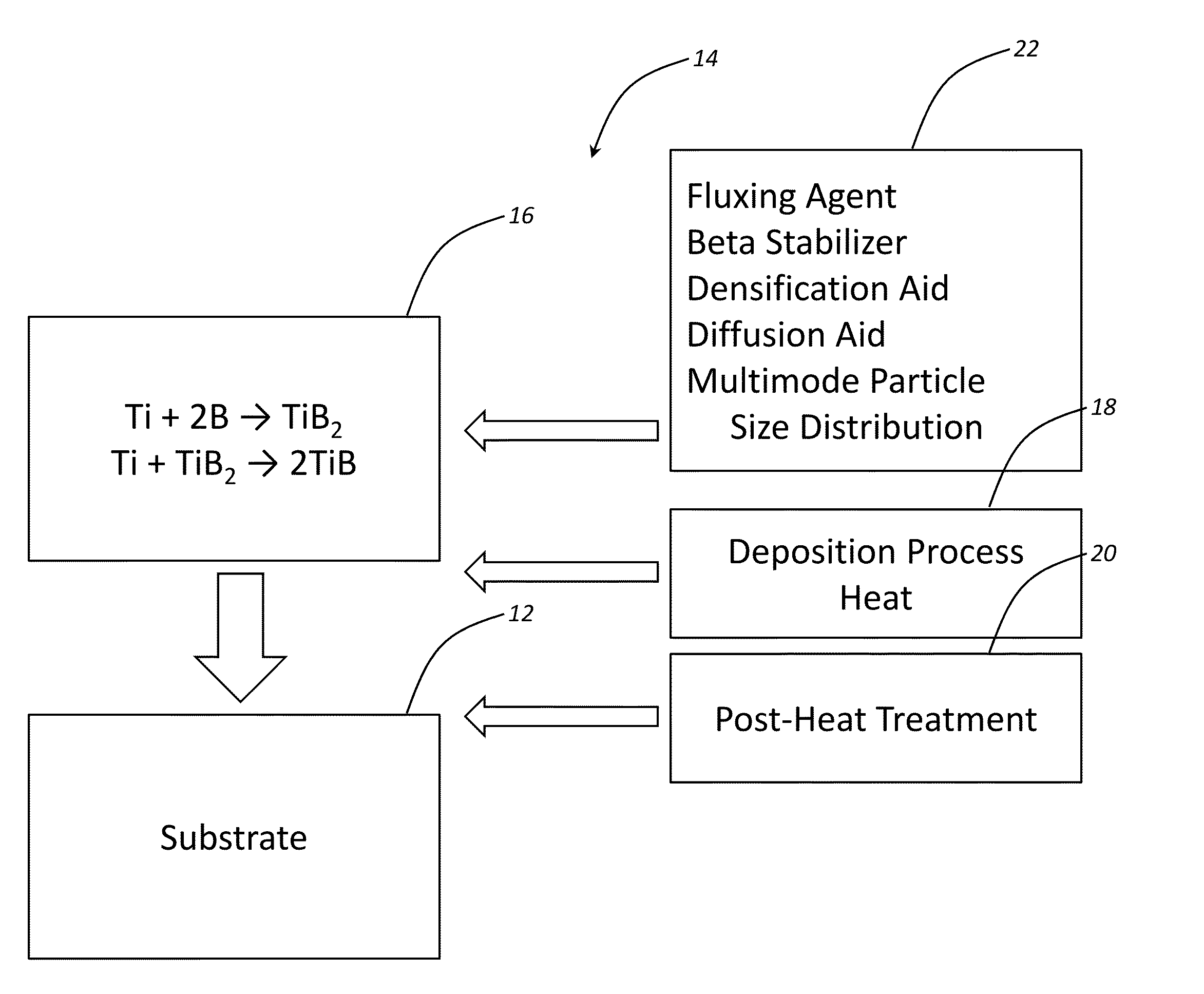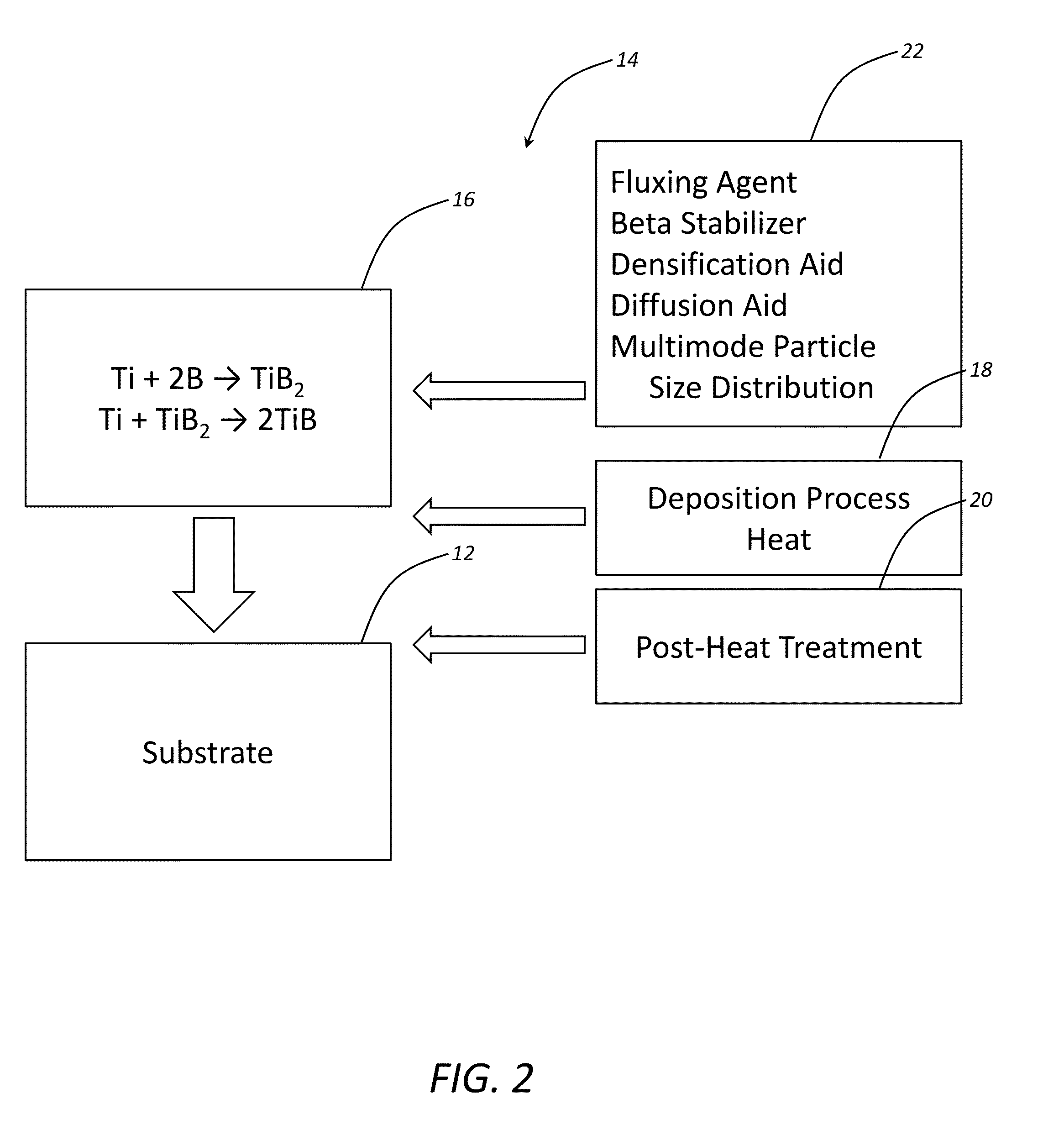Hardface coating systems and methods for metal alloys and other materials for wear and corrosion resistant applications
- Summary
- Abstract
- Description
- Claims
- Application Information
AI Technical Summary
Benefits of technology
Problems solved by technology
Method used
Image
Examples
Embodiment Construction
[0019]Again, in various exemplary embodiments, the present disclosure provides hardface coating systems and methods for metal alloys and other materials for wear and corrosion resistant applications. More specifically, the present disclosure provides hardface coatings that include a network of titanium monoboride (TiB) needles or whiskers in a matrix, which are formed from titanium (Ti) and titanium diboride (TiB2) precursors by reactions enabled by the inherent energy provided by the process heat associated with coating deposition and, optionally, coating post-heat treatment. These hardface coatings are pyrophoric, thereby generating further reaction energy internally, and may be applied in a functionally graded manner. The hardface coatings may be deposited in the presence of a number of fluxing agents, beta stabilizers, densification aids, diffusional aids, and multimode particle size distributions to further enhance their performance characteristics. This network of TiB needles ...
PUM
| Property | Measurement | Unit |
|---|---|---|
| Particle size | aaaaa | aaaaa |
| Corrosion resistance | aaaaa | aaaaa |
Abstract
Description
Claims
Application Information
 Login to View More
Login to View More - Generate Ideas
- Intellectual Property
- Life Sciences
- Materials
- Tech Scout
- Unparalleled Data Quality
- Higher Quality Content
- 60% Fewer Hallucinations
Browse by: Latest US Patents, China's latest patents, Technical Efficacy Thesaurus, Application Domain, Technology Topic, Popular Technical Reports.
© 2025 PatSnap. All rights reserved.Legal|Privacy policy|Modern Slavery Act Transparency Statement|Sitemap|About US| Contact US: help@patsnap.com



